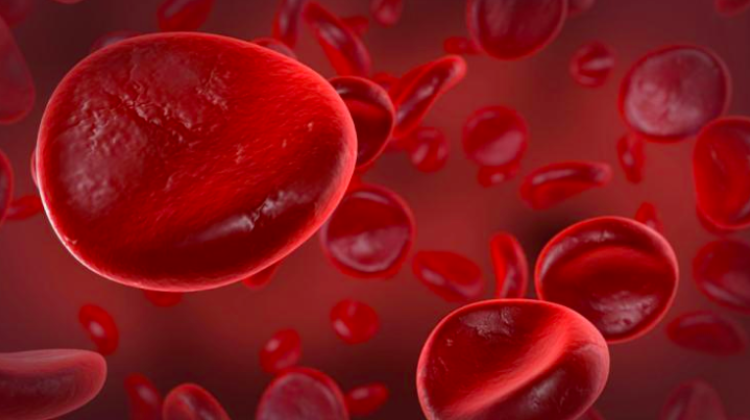Polish discovery is the first step to developing new anticoagulants
 Photo: Fotolia
Photo: Fotolia
Polish scientists have shown that bufadienolides, organic compounds produced by the plant of the genus Kalanchoe, modulate the activity of the protein responsible for preventing the blood from clotting in the blood vessels. This may help in the development of new anticoagulants.
Researchers from the Department of General Biochemistry, University of Lodz together with phytochemists from the Institute of Soil Science and Plant Cultivation in Puławy used methods of biochemistry, chemistry and molecular modelling to demonstrate that small organic compounds called bufadienolides produced by the plant of the genus Kalanchoe (Kalanchoe daigremontiana) modulate the activity of a protein found in the blood. This enzyme is responsible for preventing the blood from clotting in the blood vessels.
"This may be the first step towards further discoveries and the development of new drugs to protect against abnormal blood clotting. This, in turn, can save many patients from death caused by a heart attack or stroke" - told PAP the discovery co-author Dr. Michał Ponczek from the Department of General Biochemistry at the Faculty of Biology and Environmental Protection, University of Lodz.
Bufadienolides are groups of organic compounds that exhibit various pharmacological activities, including anti-cancer and anti-inflammatory activity. These compounds were first detected in toads (genus: Bufo), which is where they got their name - but today it is known that they also occur in some plants.
But until now bufadienolides found in Kalanchoes have not been studied and well characterized, also in terms of their effect on the blood coagulation system. This was the goal of Polish scientists.
Phytochemists from the Institute of Soil Science and Plant Cultivation in Puławy obtained fractions rich in bufadienolides from the plant and determined which specific bufadienolides occurred in it and what chemical formulas they had. "Some of the compounds were already known from other sources, but some were completely new and unknown to science" - added Dr. Ponczek.
Researchers from the Department of General Biochemistry, University of Lodz: Dr. Joanna Kołodziejczyk-Czepas, Prof. Paweł Nowak and Dr. Michał Ponczek examined the effect of these bufadienolides in vitro on the blood coagulation system.
The first biochemical tests showed that the fraction rich in bufadienolides inhibits the activity of an enzyme - thrombin - at all applied concentrations of the test preparation. It is the final enzyme that activated coagulation of another protein - fibrinogen, which can form a life-threatening clot under the influence of thrombin.
Inhibition of thrombin formation is the goal of many new generation anticoagulants. Unfortunately, the effects of using current medications often include hemorrhagic complications, which can also lead to patient`s death.
In their latest research, the scientists studied the effects of the same bufadienolide rich fractions on another enzyme - plasmin. This enzyme has the opposite effect, because it dissolves the clot. "It turned out that the same fractions of bufadienolides inhibited the activity of this enzyme only at very high concentrations, while at lower concentrations there was an increase in plasmin activity. Thus, the appropriate concentration simultaneously inhibits thrombin (a prothrombotic enzyme) and activates plasmin (an antithrombotic enzyme)" - the scientist explained.
Dr. Michał Ponczek has been involved in molecular modelling for years. He uses computers to study interactions of small chemical molecules with proteins involved in the blood coagulation process. His task in this scientific project was to try to explain the observed inhibition effects (in the case of thrombin) and stimulation (in the case of plasmin) at the molecular level.
He carried out the molecular docking, in which the binding of compounds with structures found and specified by the Institute of Soil Science and Plant Cultivation with thrombin and plasmin was simulated. Then, he carried out molecular modelling of thrombin and plasmin structures with attached bufadienolides to determine how it may affect the activity of each of these enzymes.
According to the researchers, further research may lead to the development of an innovative anticoagulant drug that would simultaneously inhibit thrombin and stimulate plasmin.
Dr. Ponczek explains that the next stage of the study should lead to finding compounds that inhibit thrombin and at the same time best stimulate plasmin. For this purpose, it will be necessary to isolate individual compounds from the fraction and carry out further biochemical tests. "The next stage is animal testing in vivo, and that would open the way to clinical trials" - concluded Dr. Michał Ponczek.
Polish scientists have described the current results of their research in the International Journal of Biological Macromolecules.
PAP - Science in Poland, Kamil Szubański
szu/ ekr/ kap/
tr. RL
Przed dodaniem komentarza prosimy o zapoznanie z Regulaminem forum serwisu Nauka w Polsce.















